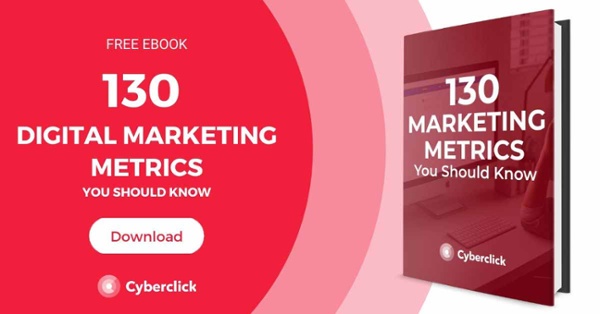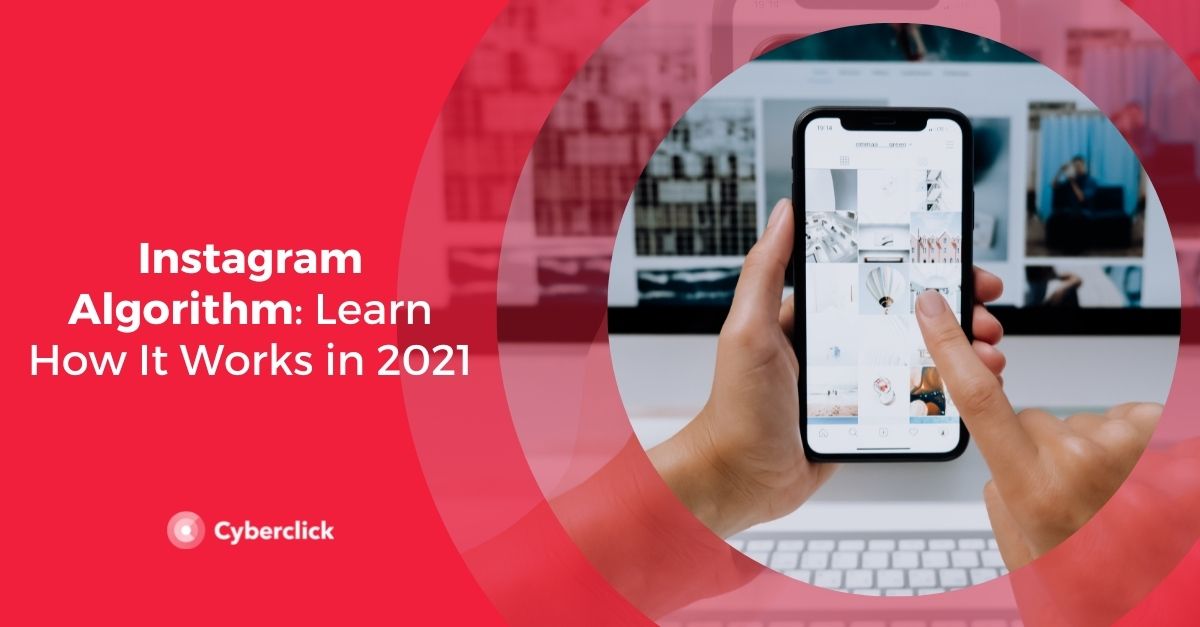Looking for examples of marketing strategies to inspire you? You've come to the right place!
There are many forms of marketing but to find the right one for your brand you have to be open to new ideas and prepared to test and experiment. In this article, we have compiled 35 examples of effective ways to market, from the most proven to the most original, to give you inspiration!

35 Forms of Marketing
There are several types of marketing strategies that can help your brand or company achieve its objectives. Knowing how to use them will lead you to success.
1. Email Marketing
This strategy has been used for years, and is one of the best. According to some studies, the return on investment in email marketing is no less than $38 for every dollar spent.
Email is a marketing strategy that can be adapted to all types of brands and campaigns, from initial acquisition to loyalty building.
2. Inbound Marketing
Inbound marketing is one of our favorites at Cyberclick as we believe in offering non-invasive advertising which allows the user to decide what content he or she wants to consume. This strategy is based on attracting users to a brand in a natural way and then accompanying them through the different stages of the conversion funnel.
3. SEO
Speaking of attracting users to your brand in a natural way, SEO or organic search engine optimization ensures that you are there when the user seeks to solve a need related to your brand. This is a type of marketing strategy that pays off in the long run so the investment is worth it.
4. SEM
Paid search engine advertising (SEM) has similar objectives to SEO. It helps you appear in the first positions of searches, in this case in the form of paid ads. This strategy can give more short-term results and is generally more conversion-oriented.
5. Content Marketing
This strategy usually goes hand in hand with inbound marketing. It is based on creating content that solves user needs related to your products and/or services, with a helpful rather than promotional approach. You can also opt for more entertaining content, which provokes emotion and is associated with your brand's values.
6. Social Media Marketing
Did you know that social networks have 2.8 billion users worldwide? Social media marketing is based on being in the same places where users spend their free time and creating a non-intrusive presence and a community around your brand.
7. Social Ads
This marketing strategy is a complement to the previous one, but instead of having an organic presence through the brand's channel, it takes advantage of the networks' advertising platforms to insert ads.
One of the advantages of Social Ads is that you can segment them using the information that social networks have about users, which allows you to target advertisements with great precision.
8. Amazon Advertising
Amazon's advertising model is based on pay-per-click (PPC) advertising and offers some unique advantages for advertisers. Ads inserted into Amazon make it possible to connect with users at a time when they are ready to buy. Additionally, the platform offers the possibility of displaying ads elsewhere online using the information it has about interests and shopping habits.
9. Display Advertising
Display advertising consists of displaying advertisements or banners on third-party websites. Banners can contain text, images, video, or interactive elements. It should be noted that this type of marketing strategy may be threatened by the rise of adblocking (programs that block ads considered intrusive).
10. Native Advertising
Native advertising is advertising in paid media that adapts in form and function to the environment it appears in, allowing it to impact the user in a less intrusive way than traditional advertising. In other words, it is advertising that the user does not perceive as advertising and seeks to consume voluntarily.
11. Mobile Marketing
Mobile marketing strategies encompass all types of actions that specifically take advantage of the functionalities of mobile devices, for example, geolocation.
Mobile marketing allows you to offer users a highly personalized experience and take advantage of all kinds of contextual opportunities.
12. Word of Mouth
Word of mouth is an example of an "old-fashioned" type of marketing strategy where the users themselves are the ones who pass on the brand's message, multiplying its reach. Today, campaigns seek to replicate this effect through social networks and recommendation pages.
13. Viral Marketing
Viral marketing consists of creating content that spreads, quickly passing from user to user. Many campaigns seek to achieve this effect through surprising, shocking, or mysterious content.
14. Public Relations
This is one of the most relevant marketing strategies. Advertising agencies and advertisers collaborate with the media to get their products noticed and increase their reach. Two classic examples of PR strategies are press releases and product launch events.
15. Influencer Marketing
Influencer marketing get users with a large social media presence to promote a product or service to their followers. In recent years, the trend has shifted from macro-influencers (users with a large follower base) to micro-influencers (users with a more modest following but who interact intensely with their community).
16. Event Marketing
Events can be used to create hype around a brand and increase sales. Examples of this include Black Friday and Cyber Monday, whose popularity is growing every year.
17. Direct Marketing
Direct marketing is a type of advertising campaign that seeks to trigger a result from a specific audience. For example, visits to an online store or downloads of an ebook.
Within this strategy we can find different formats such as mail, telemarketing, point of sale, or (the most frequent nowadays) direct email marketing.
18. Affiliate Marketing
In this type of marketing strategy, a brand's products are promoted from third-party sites (e.g. blogs on related topics). In exchange for promoting the product, the site gets a commission for each sale or conversion.
19. Trade Shows
Trade shows are large events that allow potential customers to contact different suppliers and experience products live. They are a very useful strategy in the B2B sector and for products that users prefer to try before they buy, like cars.
20. Niche marketing
Finding a specific market niche makes it possible to stand out in a saturated market. It also allows you to build loyalty among a very specific segment of consumers and create a community around your brand. For this strategy to be successful, you'll to find the most appropriate segmentation.
21. B2B Marketing
B2B or "Business to business" describes companies that sell their products and services to other companies or institutions, which in turn sell them to the public or use them in their production process or internal operations. As the name suggests, B2B marketing refers to marketing products or services to other businesses as opposed to consumers.
22. B2C Marketing
B2C or "business to consumer" is based on selling products directly to end consumers. Many types of marketing strategies and tools can be used for both B2B and B2C, but adopting different approaches is definitely important.
23. Discounts and Promotions
Strategies based on discounts and promotions offer consumers the chance to buy items at a reduced price for a limited time in order to stimulate short-term sales and raise brand awareness among first-time users. One of the keys to their success is the sense of urgency they create in the consumer to take advantage of something offered for a short period of time.
24. App Marketing
App marketing consists of designing applications for mobile devices around the brand to facilitate the use of a product, build user loyalty, or promote brand values. To be successful, the app must be accompanied by an appropriate launch and promotion campaign. In addition, it's essential that the app offers real value to users.
25. Database Marketing
As its name suggests, this type of marketing uses databases of actual or potential consumers to generate personalized messages to promote a product or service. Today, database marketing requires the ability to manage large amounts of data (big data).
26. Guerrilla Marketing
Guerrilla marketing uses unconventional and low-cost techniques with the intention of achieving maximum media coverage. Here, creativity is key to achieving maximum impact with minimum resources.
27. Cloud Marketing
In this type of marketing, all the resources are available online and the consumer can access them with a single click. For example, after seeing an ad on Amazon, users can instantly download a book to their Kindle because that product lives on the cloud.
28. Contests and Sweepstakes
Although this isn't a new strategy, contests and sweepstakes of all kinds have experienced a boom on social networks, as many brands use to them to increase their follower base and level of interaction.
29. Community Marketing
This form of marketing seeks to create a community of users with common interests around a brand. Instead of focusing on immediate sales, this type of marketing seeks to create long-term brand loyalty and involvement.
30. Personalized Marketing
Personalized marketing is the ultimate segmentation. Here, what you're seeking is no longer to differentiate a product from the competition, but to create a truly unique offer for each consumer, allowing them to choose from multiple options or even provide their own designs to create the product of their dreams.
31. Neuromarketing
Neuromarketing applies the latest studies on how the brain works to marketing by designing campaigns capable of capturing the attention of users and modifying their behavior.
32. Seasonal Marketing
Adapting to seasonal events, such as Christmas, Valentine's Day, or sales, allows brands to expand their customer base, increase short-term sales, and generate repeat purchases among regular customers. For this strategy to work well, pre-planning is essential.
33. Lead Generation
Lead generation consists of capturing users within the brand's potential audience and prompting them to leave their data voluntarily. One of the most common tactics is to offer content with great value for the user or a special discount or promotion in exchange for filling out a form with their personal information.
34. Lead Nurturing
Lead nurturing is the next step after lead generation. The users receive a series of successive marketing messages that guide them along the conversion funnel until they become customers of the brand.
35. Cause Marketing
This type of marketing seeks to reinforce the brand image and create a connection with the audience through charitable causes that fit the values of the brand and the users. A typical example of these campaigns would be to donate a percentage of sales to a related NGO.
Digital Marketing Strategist en Cyberclick. Licenciada en Publicidad y Relaciones Públicas (URV), con un postgrado en Marketing y Comunicación Online (UAB). Especializada en Google Ads, Social Ads y analítica web.
Digital Marketing Strategist at Cyberclick. Degree in Advertising and Public Relations (URV), with a postgraduate degree in Marketing and Online Communication (UAB). Specialized in Google Ads, Social Ads and web analytics.





Leave your comment and join the conversation